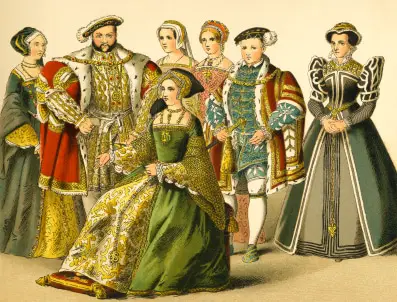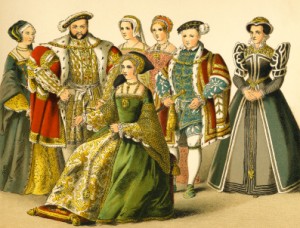An Indelible Impact

 The life and death of Anne Boleyn made an indelible impact on history that continues to this day. She was the most controversial queen England ever had, and one of the most fascinating women of all time. Her intelligence, ambition and charm captured the heart of a king. The course of their relationship altered the dynamics of the kingdom, the church and the country forever.
The life and death of Anne Boleyn made an indelible impact on history that continues to this day. She was the most controversial queen England ever had, and one of the most fascinating women of all time. Her intelligence, ambition and charm captured the heart of a king. The course of their relationship altered the dynamics of the kingdom, the church and the country forever.
During her life Anne was an integral part of fashion, politics and religious reform. Elegant and graceful, she excelled at literature, music and dance. She dressed in the French style, and is credited for making the French hood fashionable at the Tudor Court.
Anne was an advocate of religious reform and became the catalyst for England’s break with the Roman Catholic Church. She shared her religious points of view with Henry and engaged him in theological debate. She urged Henry, as King, to assert his power over the Pope and the Church itself. The schism with Rome brought about monumental changes that continue to resonate. Anne’s commitment to reform laid the foundation for the Protestant England that exists today.
Anne was a clever political player. She understood court policy and aligned herself with the most powerful factions in the court. It is believed that she brought about the ruin of the duplicitous, but highly favored, Cardinal Wolsey. Whether Anne really had a personal vendetta against the Cardinal, or it was part of a political agenda, is debatable. What is clear is that Anne’s status at court rose incredibly high setting a precedent when she was created Marquess of Pembroke. She was the first English female to achieve a noble title in her own right by creation, rather than through inheritance. She also had some control over government appointments, took part in solidifying an alliance with France, and supported Thomas Cromwell, the Kings new advisor. Ironically, Cromwell would be instrumental in Anne’s demise.
Anne’s failure to produce a son was also her greatest triumph. Her daughter Elizabeth became a formidable and exalted Queen. She continued the Protestant reformation her mother supported. John Foxe, publisher of the Book of Martyrs, stated “The entire British nation is indebted to Anne Boleyn, not only for her contribution to the commencement of the reformation, but as the mother of Queen Elizabeth, who revised it.” Under Elizabeth’s rule, the country became strong, powerful and prosperous. Her 40 year reign is known as the Golden Age of England. It is safe to imply that Anne’s tragic death had a profound effect on her daughter. Elizabeth never married nor had children.
Anne’s death and the reasons for her death have been argued since the day she died. Did Anne really commit adultery with five men, including incest with her brother? Did Thomas Cromwell see the political benefit and personal advantage of ousting Anne and orchestrate her downfall? Five centuries later, the life and death of Anne Boleyn is still intriguing. She was a captivating woman who left a permanent mark on England and its history.
By Michelle Eakins
Sources
The life and death of Anne Boleyn – Eric Ives
The Six wives of Henry VIII – Alison Wier